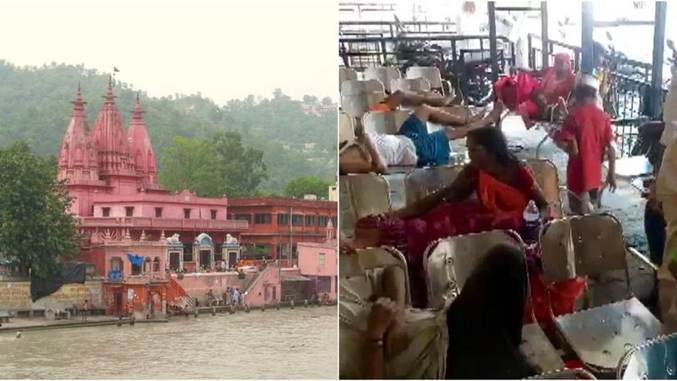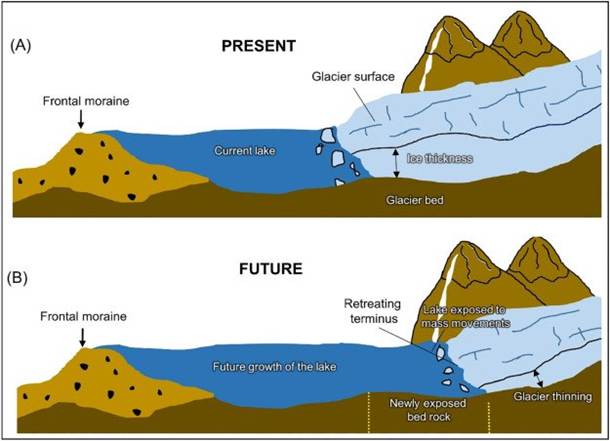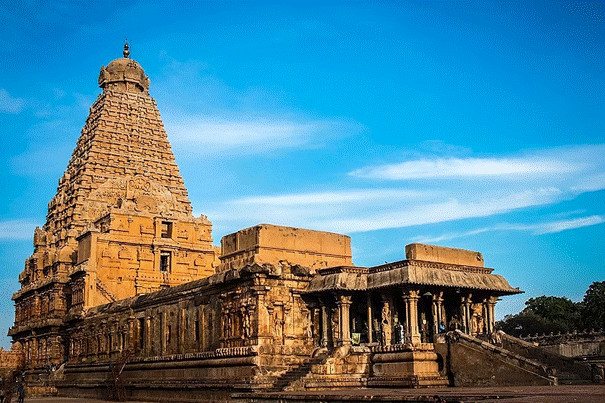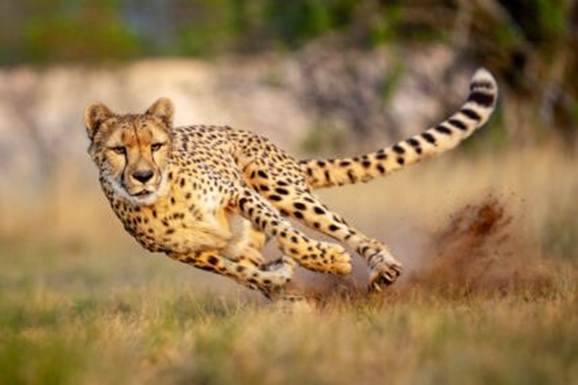Content
- Eight killed in stampede at temple in Haridwar
- How is India preparing against GLOF events?
- India’s emerging shield against the climate crisis
- Chola Democracy Before Magna Carta
- India’s Cheetah Diplomacy in Africa
Eight killed in stampede at temple in Haridwar
What Happened
- Date & Time: Morning of July 27, 2025, around 9 a.m.
- Casualties: 8 killed, 30 injured in a stampede at Mansa Devi Temple, Haridwar.
- Cause (Preliminary): Rumour of a snapped electric wire triggered mass panic during peak footfall.
Relevance : GS 3(Disaster Management)

Geographic and Structural Context
- Location: Mansa Devi temple sits 1,770 feet above sea level in the densely forested Shivalik Hills of Uttarakhand.
- Access Path: Narrow stairways and barricaded routes became choke points.
- Weather & Terrain: Monsoon season + slippery pathways likely worsened crowd management challenges.
Demographics of Victims
- Victims aged between 12–60 years.
- Pilgrims hailed from Uttar Pradesh, Bihar, and Uttarakhand, indicating regional religious magnetism.
Administrative Failures
- No Real-Time Crowd Regulation: Absence of responsive crowd control personnel during critical congestion.
- Lack of Redundancy: No alternate escape paths; single staircase acted as both entry and exit.
- Failure in Risk Communication: The rumour about electric wire went unchecked, causing chaos.
Structural and Policy Dimensions
- Recurring Pattern: India has seen over 300 stampede deaths in religious places in the last two decades.
- Systemic Gaps:
- No unified National Religious Pilgrimage Safety Protocol.
- Lack of crowd simulation planning, tech-enabled footfall monitoring.
- Poor inter-agency coordination between local police, temple boards, and municipal authorities.
Way Forward
- Mandatory Crowd Management SOPs for high-footfall religious sites.
- AI-based surveillance systems for crowd density alerts.
- Training of temple volunteers in disaster preparedness.
- Legal obligation for religious trusts to conduct structural safety audits during festival periods.
- Pilgrim insurance tied to temple visit registration apps (like Char Dham portals).
How is India preparing against GLOF events?

Recent GLOF Catastrophe in Nepal
- On July 8, 2025, a Glacial Lake Outburst Flood (GLOF) devastated Nepal’s Lende river valley, destroying a China-built bridge and disrupting the Rasuwagadhi Inland Port.
- Flash floods rendered four hydropower plants on the Bhote Koshi river inoperative, cutting 8% of Nepal’s electricity supply.
- Another GLOF occurred hours later in Mustang district; earlier GLOFs in Humla (2025) and Solukhumbu (2024) show a pattern of increasing frequency.
Relevance : GS 3(Disaster Management )
Cross-Border Challenges in Early Warning
- The Lende river flows from Tibet to Nepal—yet no early warning was issued by China despite the lake shrinkage from 63 ha to 43 ha in a day.
- Nepal lacks a bilateral early-warning system with China; growing supra-glacial lakes in Tibet elevate risk further.
- Transboundary glacial watersheds like Lende or Bhote Koshi amplify downstream vulnerabilities and diminish proactive responses.
Historical Recurrence of GLOFs in Nepal
- Major past events: Cirenma Co (1981), Digi Tsho (1985), Tama Pokhari (1998).
- Mitigation attempts at Imja Tsho and Tsho Rolpa involved manual water drawdown above 5,000m—logistically arduous.
- Despite past lessons, institutionalised regional protocols remain absent.
India’s Exposure to GLOFs
- The Indian Himalayan Region (IHR) spans 11 river basins with 28,000 glacial lakes, including 7,500 in India alone.
- Two main lake types:
▪ Supraglacial lakes (on glacier surfaces; summer-melt prone).
▪ Moraine-dammed lakes (held by unstable debris; high burst risk).
India’s Risk Landscape
- Two-thirds of GLOFs arise from ice avalanches or landslides; others stem from meltwater pressure or earthquakes.
- Remote high-altitude locations (mostly >4,500 m) hinder direct surveys—limited to summer windows.
- Severe events:
▪ Sikkim’s South Lhonak GLOF (2023): destroyed Chungthang dam (1250 MW), raised Teesta riverbed, worsened flood risk.
▪ Kedarnath disaster (2013): Chorabari GLOF + cloudburst triggered multi-layered devastation.
India’s Mitigation Strategy
- NDMA has adopted a risk-reduction-first model under the Committee on Disaster Risk Reduction (CoDRR).
- First national GLOF mitigation programme launched ($20 million), targeting 195 high-risk glacial lakes in four categories.
- Five-fold focus:
- Lake-specific hazard assessments
- Automated Weather & Water Stations (AWWS)
- Downstream Early Warning Systems (EWS)
- Physical mitigation (drawdown, retention structures)
- Community engagement
Tech & Knowledge Gaps
- Leveraging SAR interferometry to detect micro-slope changes (cm-level) in unstable moraine dams—currently underutilised.
- Limited Indian innovation and tech investment in Himalayan cryosphere resilience.
- Remote sensing (surface area monitoring) remains the only scalable tool, but it’s post-facto, not predictive.
Expedition Insights (Summer 2024)
- Multi-institutional teams visited lakes across J&K, Ladakh, HP, Uttarakhand, Sikkim, and Arunachal.
- Employed:
▪ Bathymetry to measure water volumes.
▪ ERT to detect hidden ice cores in moraine dams.
▪ UAVs and slope stability surveys for terrain mapping. - Installed real-time monitoring stations at two lakes in Sikkim—transmit data every 10 minutes.
- ITBP deployed as manual early warning buffer in the absence of automated systems.
Way Forward
- Monsoon 2025 expeditions already being planned.
- 16th Finance Commission (FY2027–31) expected to scale the GLOF programme across Himalayan states.
- Sustained progress demands:
▪ Institutional cross-border EWS protocols (especially with China).
▪ Local community trust-building.
▪ Private innovation ecosystem for climate-resilient Himalayan infrastructure.
India’s emerging shield against the climate crisis
Context & Urgency
- India faced 764 major natural disasters since 1900, nearly half after 2000 – showing accelerating climate volatility.
- Between 2019–2023, India lost $56 billion to weather-related disasters — the highest in South Asia, ~25% of Asia-Pacific losses.
- Conventional indemnity-based insurance is slow, disputed, and inadequate for sudden climate shocks.
Relevance : GS 3(Disaster Management)
How Parametric Insurance Works
- Pays automatically when pre-defined weather thresholds are breached (e.g. <300 mm rainfall, >40°C, wind speed, seismic activity).
- Based on independently verified datasets from IMD, NASA-MERRA, satellite systems — ensuring objectivity.
- Eliminates the need for damage assessment, enabling rapid liquidity in crisis.
Implementation in India
- Nagaland (2024): First Indian state with multi-year parametric cover for landslides and extreme rainfall.
- Pilots in Rajasthan and U.P.: Protected women smallholder farmers against drought via water balance index.
- Jharkhand: Model proposed for microfinance-linked crop loan protection triggered by rainfall/temperature thresholds.
Global Relevance
- Successfully deployed in Africa, Pacific Islands, U.K. — for droughts, floods, cyclones, even livestock farming.
- Covers modern sectors like solar energy, where policies trigger payouts based on irradiance levels.
Infrastructure in Place
- India already has the climate data ecosystem, digital platforms, and State disaster mitigation funds to scale up.
- Early wins in agriculture, renewables, rural credit, and public disaster finance demonstrate viability.
What India Must Do Next
- Treat parametric insurance as critical climate infrastructure, akin to UPI in payments.
- Expand data networks, integrate into State Disaster Response, embed in climate finance architecture.
- Develop a scalable national framework — pre-approved triggers, digital disbursement, and legal-enforceability.
Strategic Advantages
- Offers speed, transparency, and resilience in an era of climate uncertainty.
- Helps preserve livelihoods, sustain credit cycles, and stabilize local economies during disasters.
- Can de-risk investments in climate-sensitive sectors and support climate adaptation finance under SDGs and Paris goals.
Chola Democracy Before Magna Carta

- Context : PM Modi, speaking at Brihadeeswara Temple, highlighted that India had democratic traditions centuries before the Magna Carta (1215), citing Chola-era electoral practices.
- Uttaramerur Inscriptions (c. 920 CE): These stone inscriptions in Tamil Nadu provide one of the world’s earliest written records of an electoral system.
- Local Governance Framework:
- Sabha: Brahmin-dominated settlements.
- Ur: Non-Brahmin village assemblies.
- Both were elected councils, managing revenue, justice, public works, and temple administration.
Relevance : GS 1(Culture, Heritage ,History)
Kudavolai: The Ballot Pot System
- Procedure:
- Names of eligible candidates written on palm leaves.
- Placed in a pot (kudam).
- A young boy, symbolising impartiality, would draw names publicly.
- Eligibility Conditions:
- Minimum age, education, property ownership, and moral character were prerequisites.
- Exclusions: Women, labourers, and landless individuals — reflective of caste and gender hierarchies of the time.
Decentralised Governance & Civic Autonomy
- Subsidiarity in Action: Empowered village assemblies and merchant guilds (e.g., Manigramam, Ayyavole) formed a bottom-up administrative model.
- Sustainable Administration:
- Cholas used civic systems to extend control, not just military might.
- Historian Anirudh Kanisetti noted the Cholas “engineered legitimacy through local institutions”, contrasting later centralised empires.
Symbolic Statecraft & Strategic Messaging
- Gangajal Episode (1025 CE):
- Rajendra Chola brought Ganges water to his capital, GangaiKonda Cholapuram.
- As per copper plate grants, it was called a “liquid pillar of victory” — blending ritual piety with imperial symbolism.
- Military + Administrative Innovation:
- As Tansen Sen observed, the Cholas excelled not only in naval campaigns but also in creating proto-democratic governance that projected power through order and ritual.
Beyond the Magna Carta
- Western lens on democracy often begins with the Magna Carta and Enlightenment; the Chola model shows alternative civilizational trajectories of governance.
- No modern liberalism, but the institutionalisation of accountability, procedure, and civic duty reflects enduring democratic instincts in Indian polity.
Brihadeeswara Temple – Chola Architectural Marvel
- Built by: Raja Raja Chola I in 1010 CE at Thanjavur, Tamil Nadu.
- UNESCO World Heritage Site: Part of “Great Living Chola Temples” (2004), along with Gangaikonda Cholapuram and Airavatesvara temples.
- Dedicated to: Lord Shiva (as Brihadeeswara or Rajarajeswaram).
- Dravidian Architecture: Noted for its grand scale, symmetry, and granite construction—rare for that region.
- Vimana (tower): Soars to 66 meters, one of the tallest temple towers in India, capped by a single 80-ton granite block.
- Nandi (bull statue): Carved from a single stone, among the largest monolithic Nandi statues in India.
- No binding agents used: Stones interlocked with precision engineering, showcasing Chola mastery in structural design.
- Murals & Inscriptions: Inner walls adorned with Chola frescoes, and inscriptions detail royal donations, military conquests, and temple rituals.
India’s Cheetah Diplomacy in Africa
Project Context and Strategic Relevance
- The Cheetah Reintroduction Project is the world’s first intercontinental large carnivore translocation effort, aiming to restore ecological balance by reintroducing Asiatic cheetahs (extinct in India since 1952).
- It serves as a soft power instrument, enhancing India’s conservation credentials and diplomatic presence in Africa.
- The project aligns with India’s “Act Africa” policy, expanding bilateral ties beyond trade to include biodiversity cooperation.

Relevance : GS 2(International Relations), GS 3(Environment and Ecology)
Bilateral Dynamics with Key African Nations
1. South Africa – A Technically Strong But Politically Shifting Ally
- India signed a 5-year MoU with South Africa in 2022, facilitating the transfer of 12 cheetahs and ongoing veterinary/technical support.
- A post-election regime change in 2024 has led to bureaucratic reshuffling; new officials are reviewing the MoU’s scope and implementation.
- South African wildlife scientists remain engaged, but policy continuity has stalled, creating a diplomatic deadlock flagged in recent NTCA meetings.
- South Africa’s expertise in predator translocation (e.g., lions, leopards) makes it a vital partner, not just a source country.
2. Botswana – A Steady Contributor Despite Regional Volatility
- Botswana has formally committed to sending 4 cheetahs; timelines under discussion.
- With robust wildlife governance and lower political churn, it offers stability and institutional clarity.
- The diplomatic success here reflects India’s proactive engagement and Botswana’s confidence in India’s management of the Kuno habitat.
3. Kenya – A Long-Term Strategic Investment, Not Immediate Source
- No cheetahs yet; focus is on capacity-building, exchange programs, and institutional cooperation (e.g., ranger training, habitat design).
- An MoU expected in March 2025, but talks have remained generic and non-committal regarding cheetah numbers or timelines.
- Kenya’s world-leading expertise in large predator ecology (e.g., Masai Mara) makes it valuable for long-term ecosystem resilience efforts in India.
4. Tanzania and Sudan – On the Radar, but No Formal Engagement
- Steering Committee minutes referenced possible future ties with these nations, but NTCA later clarified no formal progress or MoUs.
- Sudan’s internal instability and Tanzania’s regulatory rigidity pose diplomatic and logistical hurdles.
Institutional and Administrative Coordination
- The National Tiger Conservation Authority (NTCA) is the nodal agency overseeing negotiations, backed by India’s embassies and the Ministry of Environment.
- Madhya Pradesh Forest Department officials have been deployed as field-level diplomats — visiting South Africa to assess protocols, address technical gaps, and pitch India’s preparedness at Gandhi Sagar (future release site).
- Cheetah Project Steering Committee led by Dr. Rajesh Gopal is monitoring international engagement, domestic habitat readiness, and mortality audits.
On-ground Challenges and Ecological Imperatives
- Kuno has witnessed multiple cheetah deaths, raising questions about habitat capacity, prey base, territorial behavior, and disease control — making the need for fresh genetic stock urgent but cautious.
- Experts have raised concerns about carrying capacity saturation, leading to discussions on alternative sites like Gandhi Sagar and Nauradehi.
- Logistical complexities include quarantine protocols, air transport regulations, and veterinary clearances across jurisdictions — all dependent on tight diplomatic synchronisation.
Geopolitical and Developmental Linkages
- The cheetah diplomacy adds to India’s development partnerships in Africa, complementing solar energy (ISA), vaccine diplomacy, and digital skilling programs.
- Africa’s trust in India’s conservation approach bolsters broader South-South cooperation models where biodiversity is a shared priority.
- India’s ability to sustain this project through political transitions abroad reflects a maturing global conservation leadership role, akin to its tiger conservation narrative under Project Tiger.



